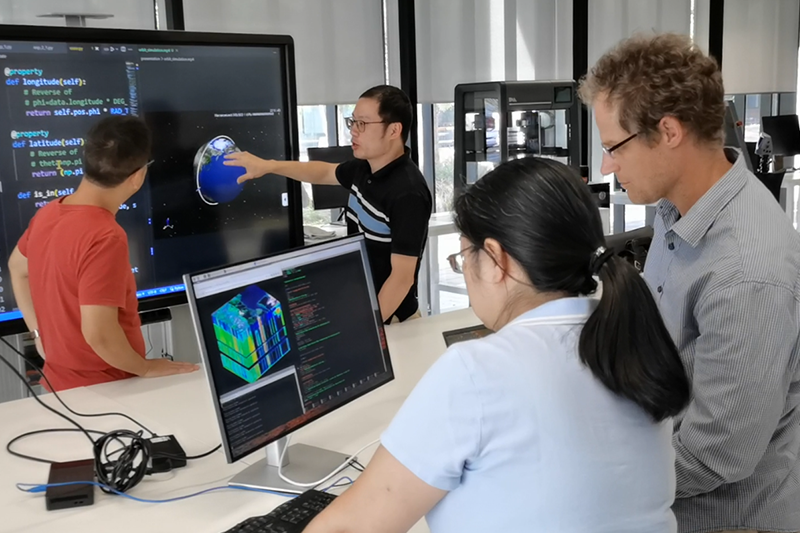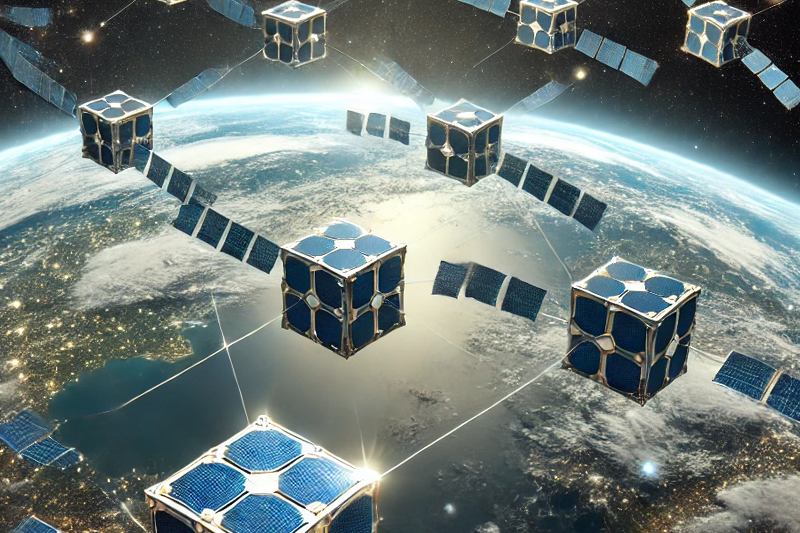AI in the sky: Bushfires could be foiled by new UniSA technology that detects smoke from space.
UniSA researchers have created a breakthrough Artificial Intelligence (AI) technology that can detect bushfires from space in real-time, even before a blaze takes hold.
The breakthrough comes ahead of Australia’s 2024/25 summer, which is predicted to have “intense” and more “extensive” bushfires.
The International Journal of Wildland Fire and Australia’s Bureau of Meteorology warns that Australia could experience multi-day fires that increase in intensity overnight.
“Our breakthrough means that bushfires can be detected earlier from space, even before they take hold and generate large amounts of heat, allowing ground crews to respond more quickly and prevent loss of life and property.”
Dr Stefan Peters, UniSA STEM
However, a dedciated research team has created an eye in the sky in the form of an early fire smoke detection system.
The system, which has been delivered through a project funded by the SmartSat CRC and led by the University of South Australia (UniSA) uses cutting-edge AI technology.
The system is currently onboard South Australia’s first cube satellite, Kanyini, and will be used to observe, record and analyse images of the Earth’s surface — including images of bushfires.
Traditionally, Earth observation satellites cannot perform real-time image analyses of Earth’s surface, due to limited onboard processing capabilities.
Consequently, Earth image data captured from space needs to be first downlinked to the ground for analysis, which takes valuable time.
Of course, every second counts when it comes to fighting bushfires.

Dr Stefan Peters (bottom right) with his UniSA research team, observing data from simulated hyperspectral satellite imagery.
Lead researcher and UniSA geospatial scientist, Dr Stefan Peters, says his team’s new AI system addresses the limitation of current technology.
“A key feature of our new technology, which was created by our team of leading experts from UniSA, Swinburne University of Technology and Geoscience Australia, recognises critical image data,” Dr Peters says.
“Currently, only a fraction of Earth image data collected by satellites contains critical information related to the purpose of a mission,” Dr Peters says.
“Simply put, our AI classifies images into those with or without clouds, or smoke, or a combination of both, using deep learning techniques.
“It performs this function all within a cube satellite’s available onboard processing capacity, power availability and data storage constraints.
“Compared to traditional on-ground processing, our model actually reduces the volume of image data to 16% or less of its original size, while consuming 69% less energy.
“It also detects fire smoke 500 times faster than traditional on-ground processing.
“Our research shows there are significant benefits of onboard AI compared to traditional on-ground processing and it is fantastic to have our technology onboard the research satellite, Kanyini."
The AI technology has been trained on approximately 200,000 images of modified satellite imagery of recent Australian bushfires.
Additionally, using imagery from a past fire event in the Coorong, the AI system took less than 14 minutes to detect and send the data to the South Pole ground station.

A Generative AI depiction of a cube satellite constellation above Earth, created by Prof Peters
“Smoke is usually the first thing you can see from space before the fire gets hot and big enough for any sensors to identify it, so early detection is crucial,” Dr Peters says.
“Our breakthrough means that bushfires can be detected earlier from space, even before they take hold and generate large amounts of heat, allowing ground crews to respond more quickly and prevent loss of life and property.
“To really unlock the protentional of our technology—and to achieve earlier bushfire detection from space—we need to deploy our AI system onto a group of cubesats, known as a ‘constellation’.
“We also hope to get our technology onboard the PhiSat-2, which is a cubesat that can ‘zoom’ in to five metres above the Earth’s surface and take images, allowing us to detect smaller fires and raise the alarm even earlier.”
“Our technology will not only prove invaluable in the event of bushfires but also serve as an early warning system for other natural disasters.
The researchers have published details of their experiment in the IEEE Journal of Selected Topics in Applied Earth and Remote Sensing.





